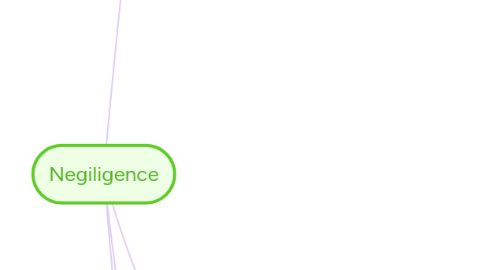
1. Duty
1.1. No Rltshp
1.1.1. R(3)S7: An actor has a duty to exercise reasonable care.
1.1.1.1. Generally, this means there is no duty to take affirmative action unless:
1.1.1.1.1. defendant has control over instrumentality causing injury
1.1.1.1.2. Defendant is responsible for placing the plaintiff in a position of danger
1.1.1.1.3. Occasionally statutory requirement - Good Samaritan State (Minn Stat 604A.01)
1.1.1.1.4. Special relationship exists:
1.1.1.2. Generally, this means there is not duty to control third persons, unless:
1.1.1.2.1. Special duty undertaken to provide security
1.1.1.2.2. Special relationship may impose duty when there is a special relationship between the defendant and the person who causes the harm
1.1.1.2.3. criminal conduct is foreseeable.
1.1.2. Actor owes a duty when he creates a foreseeable risk of injury.
1.1.3. Primary assumption of risk applies where the plaintiff voluntarily encounters a known and appreciated risk of injury, therefore, no duty.
1.1.4. Express assumption or risk: this is an exculpatory clause - requirements: clear, unambigous, not counter to public interest, not be depenenant on a special relationship, and must have equal bargaining power.
1.1.5. Duty to protect against emotional harm
1.1.5.1. suits for loss of consortium
1.1.5.2. Emotional distress approaches R(3)S46, S47
1.1.5.2.1. impact rule - mostly abandoned
1.1.5.2.2. Zone of danger: requirements for emotional harm resulting in physical symptoms, fear for the safety of another
1.1.5.2.3. bystander recovery - close relationship, contemporaneous perception.
1.1.5.2.4. Direct victim recovery - ed occurs in the course of specified categories of activities, undertakings or relationship in which negligent conduct is likely to cause serious emotional disturbance.
1.2. Rltshp
1.2.1. Duties of Professionals
1.2.1.1. Appropriate standard of care
1.2.1.1.1. general practitioner - locality vs national standards
1.2.1.1.2. Experts - national standard of care
1.2.1.2. Proof of professional malpractice: Establish the standard of care, the the defendant was negligent in deviating and the deviation caused the injury
1.2.1.3. Informed consent
1.2.1.3.1. Must be a failure to disclose, undisclosed risk must materialize, P mut show that had their been disclosure, P would not have taken the risk.
1.2.2. Landowners
1.2.2.1. Classification of entrant:
1.2.2.1.1. Sui generis
1.2.2.1.2. Licensees
1.2.2.1.3. Trespassers
1.2.2.1.4. Invitees
1.2.2.2. Merger: Rowland v Christian or Peterson v. Balach
1.2.2.2.1. Categories might be merged in favor of a general duty of reasonable care. Entrant's status is then one piece of evidence
1.2.2.2.2. Impact: Other control devices may be substituted for other control devices - obvious danger and/or assumption of risk are examples.
1.2.2.3. landlord tenant law
1.2.2.3.1. Common law: no duty
1.2.2.3.2. No strict liability for breaching statutory or implied warrant of habitability. Landlord must know of danger before the obligation to repair.
2. Breach of duty
2.1. Standard of care
2.1.1. Common law
2.1.1.1. Reasonable person standard of care
2.1.1.1.1. Physical disability
2.1.1.1.2. Intellectual disability
2.1.1.1.3. Insanity
2.1.1.1.4. Children
2.1.2. Statutory
2.2. Proof of breach
2.2.1. Custom
2.2.1.1. Evidence of a breach of custom is part of the totality of the evidence
2.2.2. Statute or ordinances
2.2.2.1. Statutory purpose analysis must be met: P must be the class of persons to be protected and suffer the type of injury the statute intends to avoid.
2.2.2.1.1. Where the breach is not negligence per se, the statutory violations may still be evidence of negligence
2.2.2.1.2. Breach of the statute may be negligence per se, negligent as a matter of law, unless an excuse or justification is permitted.
2.2.2.1.3. Exceptional statutes that are intended to protect a specific class of persons against their own lack of judgement, and violation may result in strict liability.
3. Scope of liability
3.1. Cause in fact: P must prove a causal connection between D's conduct and P's injuries
3.1.1. Burden of proof is on the P, unless it has shifted to the defense for policy reasons.
3.1.1.1. But-for: but for the conduct, the harm would not occur R(3)S26
3.1.1.2. Substantial factor: was D's conduct a substantial factor in bringing about harm? Not sole cause.
3.2. Liability is limited to physical harms that result from the risks that made the actor's conduct tortious. R(3)S29 - magic decoder
3.2.1. Direct consequences rule
3.2.1.1. Palsgraf
3.3. Intervening and superseding cause
3.3.1. Intervening cause does not terminate D's duty if the risk was the same type of risk of injury that made D's conduct negligent - Yamaha hypo.
3.3.2. Superseding cause can terminate the risk created by the D's conduct, the unanticipated result may not be the D's liability.
4. Summers v. Tice
5. Caroll Towing
6. Defenses
6.1. Immunities
6.1.1. Parent child immunity
6.1.1.1. Abolished in some states
6.1.1.2. retained without modification in others
6.1.1.3. Modification with retention of immunity where parental discretion is excercised
6.1.2. Governmental immunities
6.1.2.1. United States - regulated by federal tort claims act
6.1.2.1.1. no liability for discretionary acts (policy decisions susceptible to political persuasion)
6.1.2.1.2. Judicially established exceptions - strict liability exception and exception for injuries to persons on military duty
6.1.2.2. Minnesota
6.1.2.2.1. official immunity
6.1.2.2.2. governmental entitity
